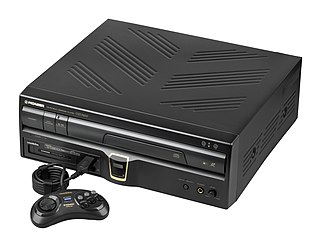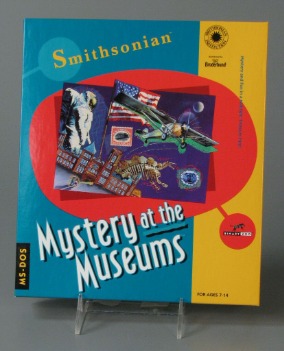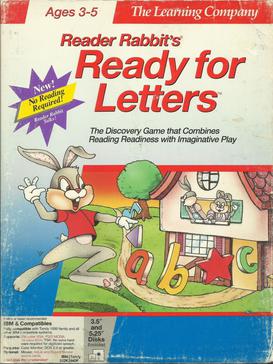
The Sega CD, known as Mega-CD in most regions outside North America and Brazil, is a CD-ROM accessory for the Sega Genesis produced by Sega as part of the fourth generation of video game consoles. It was released on December 12, 1991, in Japan, October 15, 1992, in North America, and April 2, 1993, in Europe. The Sega CD plays CD games and adds hardware functionality such as a faster CPU and graphic enhancements such as sprite scaling and rotation. It can also play audio CDs and CD+G discs.

The 3DO Company, also known as 3DO, was an American video game company. It was founded in 1991 by Electronic Arts founder Trip Hawkins, in a partnership with seven other companies. After 3DO's flagship video game console, the 3DO Interactive Multiplayer, failed in the marketplace, the company exited the hardware business and became a third-party video game developer. It went bankrupt in 2003 due to poor sales of its games. Its headquarters were in Redwood City, California, in the San Francisco Bay Area.

The 3DO Interactive Multiplayer, also referred to as simply 3DO, is a home video game console developed by The 3DO Company. Conceived by entrepreneur and Electronic Arts founder Trip Hawkins, the 3DO was not a console manufactured by the company itself, but a set of specifications, originally designed by Dave Needle and RJ Mical of New Technologies Group, that could be licensed by third parties. Panasonic produced the first models in 1993, and further renditions of the hardware were released afterwards by GoldStar, Sanyo, Creative Labs, and Samsung Electronics in 1997.

The CDTV is a home multimedia entertainment and video game console – convertible into a full-fledged personal computer by the addition of optional peripherals – developed by Commodore International and launched in April 1991.

The Miracle Piano Teaching System is educational software which uses a MIDI keyboard to teach how to play the piano. It was published in 1990 by The Software Toolworks for the Nintendo Entertainment System, Super NES, Macintosh, Amiga, Sega Genesis, and MS-DOS compatible operating systems.

Night Trap is a 1992 interactive movie developed by Digital Pictures and published by Sega for the Sega CD. Presented primarily through full-motion video (FMV), Night Trap tasks the player to observe teenage girls having a sleepover visiting a house which, unbeknownst to them, is infested with vampires. The player watches live surveillance footage and triggers traps to capture anyone endangering the girls. The player can switch between different cameras to keep watch over the girls and eavesdrop on conversations to follow the story and listen for clues.

The LaserActive is a converged device and fourth-generation home video game console capable of playing LaserDiscs, Compact Discs, console games, and LD-G karaoke discs. It was released by Pioneer Corporation in 1993. In addition to LaserActive games, separately sold add-on modules accept Mega Drive/Genesis and PC Engine/TurboGrafx-16 ROM cartridges and CD-ROMs.

Mindscape was a video game developer and publisher. The company was founded by Roger Buoy in October 1983 in Northbrook, Illinois, originally as part of SFN Companies until a management buyout was completed in 1987. Mindscape went public in 1988 and was subsequently acquired in 1990 by The Software Toolworks, eyeing Mindscape's Nintendo license. When Toolworks was acquired by Pearson plc in 1994, Mindscape became the primary identity for the development group. Mindscape was then sold to The Learning Company in 1998 and bought out by Jean-Pierre Nordman in 2001, becoming headquartered in Boulogne-Billancourt, France. Following the poor performance of its products, Mindscape exited the video game industry in August 2011. Notable titles released by Mindscape include the MacVenture series, Balance of Power, Moonstone: A Hard Days Knight, Legend, Warhammer: Shadow of the Horned Rat, Warhammer: Dark Omen and Lego Island.
1993 saw many sequels and prequels in video games, such as Dragon Ball Z: Super Butōden, Mortal Kombat II, Secret of Mana, and Super Street Fighter II, alongside new titles such as Star Fox, FIFA International Soccer, Doom, Gunstar Heroes, Myst, Samurai Shodown, Ridge Racer, NBA Jam, Disney's Aladdin, and Virtua Fighter.

The Software Toolworks was an American software and video game developer based in Novato, California. The company was founded by Walt Bilofsky in 1980 out of his Sherman Oaks garage, which he converted into an office, to develop software for the Heathkit H89 microcomputer. It quickly expanded into video games, releasing Airport and MyChess in 1980; other notable games include Chessmaster 2000, Mavis Beacon Teaches Typing, and Mario Is Missing!. Toolworks merged with its distributor, Software Country, in 1986 and, after going public in 1988, acquired IntelliCreations, DS Technologies, and Mindscape. By 1994, Toolworks employed 600 people and had a revenue of US$150 million. In May that year, it was acquired by Pearson plc for $462 million, which converted it to bear the Mindscape identity by November.

MegaRace is a racing video game developed by Cryo. It features pre-rendered 3-D graphics and over twenty minutes of full-motion video of fictional game show host Lance Boyle. It was released for DOS in 1993. It was then released for the Sega CD and the 3DO the following year. It spawned two sequels, MegaRace 2 and MegaRace 3.

The Playroom is a video game first created in 1989 for DOS, Apple II and Macintosh computers. The game was compatible with the TouchWindow utility. It was ported to the Amiga and FM Towns computers in 1992 and 1994 respectively and then remade for Microsoft Windows and Macintosh in 1995. It was designed for ages 3 to 6 manufactured by Broderbund. A follow-up game titled The Treehouse came in 1991 as well as a sequel to this game, called The Backyard in 1993.

The Need for Speed is a street racing game developed by EA Canada, originally known as Pioneer Productions, and published by Electronic Arts for 3DO in 1994. It allows driving eight licensed sports cars in three point-to-point tracks either with or without a computer opponent. Checkpoints, traffic vehicles, and police pursuits appear in the races.

Samurai Shodown, known in Japan as Samurai Spirits, is a fighting game developed and published by SNK for the Neo Geo arcade and home platform. Released in 1993, it is the first installment in the Samurai Shodown series. In contrast to other fighting games at the time, which were set in modern times and focused primarily on hand-to-hand combat, Samurai Shodown is set in feudal-era Japan and was SNK's first arcade fighting game to focus primarily on weapon-based combat.

Mystery at the Museums is an educational video game developed by Binary Zoo Software and published by Artech Studios for MS-DOS in 1993. The game is Binary Zoo's second release as well as the second in their "Adventures With Edison" series.
Hell Cab is a 1993 adventure video game developed by Digital Fusion and published by Time Warner in 1993 for Macintosh, Windows 3.x.

Star Wars Chess is a 1993 chess-playing video game developed by The Software Toolworks, based on the Star Wars film franchise and published by Mindscape for DOS, Sega CD and Windows 3.x. A 3DO Interactive Multiplayer version was planned but never released.

Reader Rabbit's Ready for Letters is a 1992 video game and the fifth game of the Reader Rabbit franchise. Although a spin-off title, it is designed for ages 3 to 6 to teach prereaders about becoming literate and phonics.

On December 7, 1993, and March 5, 1994, members of the combined United States Senate Committees on Governmental Affairs and the Judiciary held congressional hearings with several spokespersons for companies in the video game industry including Nintendo and Sega, involving violence in video games and the perceived impacts on children. The hearing was a result of concerns raised by members of the public on the 1993 releases of Night Trap, Mortal Kombat and later Doom which was released after the first hearing. Besides general concerns related to violence in video games, the situation had been inflamed by a moral panic over gun violence, as well as the state of the industry and an intense rivalry between Sega and Nintendo.

The Mario's Early Years! series is a trilogy of point-and-click educational games released on MS-DOS and Super Nintendo Entertainment System by The Software Toolworks. The three games consist of Fun with Letters, Fun with Numbers and Preschool Fun.


















